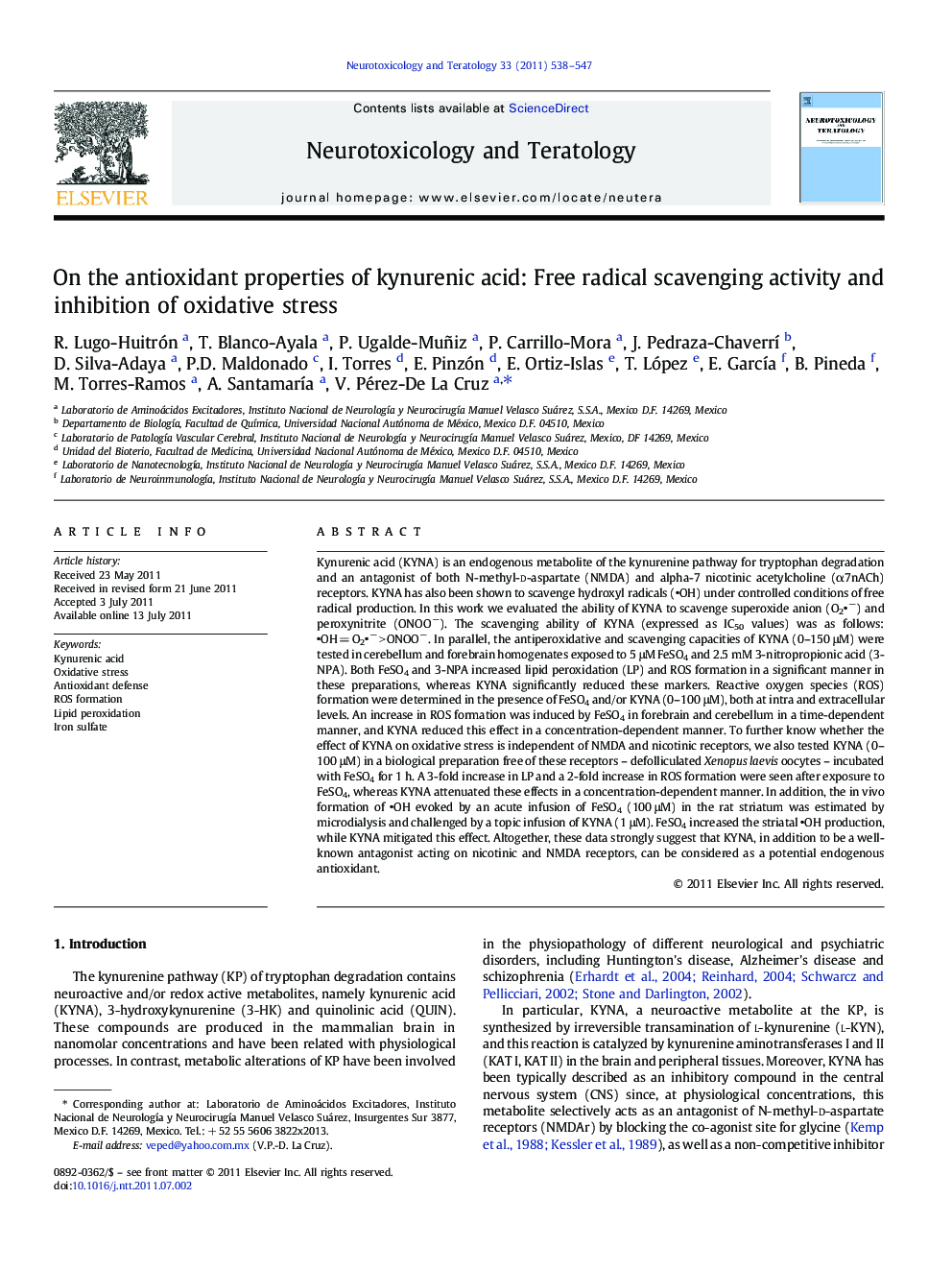| Article ID | Journal | Published Year | Pages | File Type |
|---|---|---|---|---|
| 2591531 | Neurotoxicology and Teratology | 2011 | 10 Pages |
Kynurenic acid (KYNA) is an endogenous metabolite of the kynurenine pathway for tryptophan degradation and an antagonist of both N-methyl-d-aspartate (NMDA) and alpha-7 nicotinic acetylcholine (α7nACh) receptors. KYNA has also been shown to scavenge hydroxyl radicals (OH) under controlled conditions of free radical production. In this work we evaluated the ability of KYNA to scavenge superoxide anion (O2−) and peroxynitrite (ONOO−). The scavenging ability of KYNA (expressed as IC50 values) was as follows: OH = O2− > ONOO−. In parallel, the antiperoxidative and scavenging capacities of KYNA (0–150 μM) were tested in cerebellum and forebrain homogenates exposed to 5 μM FeSO4 and 2.5 mM 3-nitropropionic acid (3-NPA). Both FeSO4 and 3-NPA increased lipid peroxidation (LP) and ROS formation in a significant manner in these preparations, whereas KYNA significantly reduced these markers. Reactive oxygen species (ROS) formation were determined in the presence of FeSO4 and/or KYNA (0–100 μM), both at intra and extracellular levels. An increase in ROS formation was induced by FeSO4 in forebrain and cerebellum in a time-dependent manner, and KYNA reduced this effect in a concentration-dependent manner. To further know whether the effect of KYNA on oxidative stress is independent of NMDA and nicotinic receptors, we also tested KYNA (0–100 μM) in a biological preparation free of these receptors – defolliculated Xenopus laevis oocytes – incubated with FeSO4 for 1 h. A 3-fold increase in LP and a 2-fold increase in ROS formation were seen after exposure to FeSO4, whereas KYNA attenuated these effects in a concentration-dependent manner. In addition, the in vivo formation of OH evoked by an acute infusion of FeSO4 (100 μM) in the rat striatum was estimated by microdialysis and challenged by a topic infusion of KYNA (1 μM). FeSO4 increased the striatal OH production, while KYNA mitigated this effect. Altogether, these data strongly suggest that KYNA, in addition to be a well-known antagonist acting on nicotinic and NMDA receptors, can be considered as a potential endogenous antioxidant.
► This manuscript describes the antioxidant effect of kynurenic acid (KYNA). ► In vitro experiments supported KYNA as a free radical scavenger. ► In in vivo experiments KYNA reduced the levels of hydroxyl radical in rat striatum. ► Our findings emphasize KYNA's role as a free radical scavenger in the CNS.
